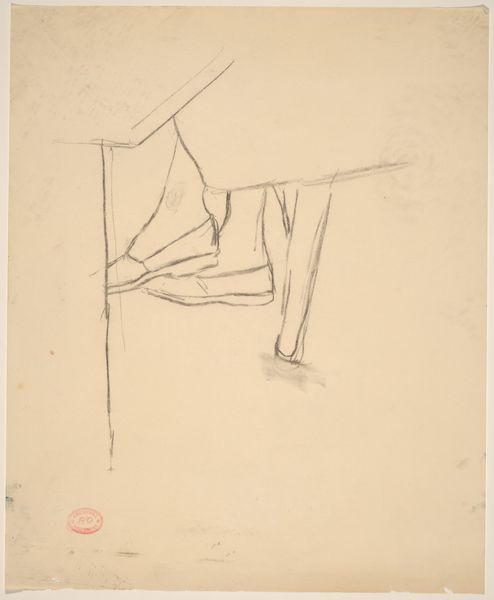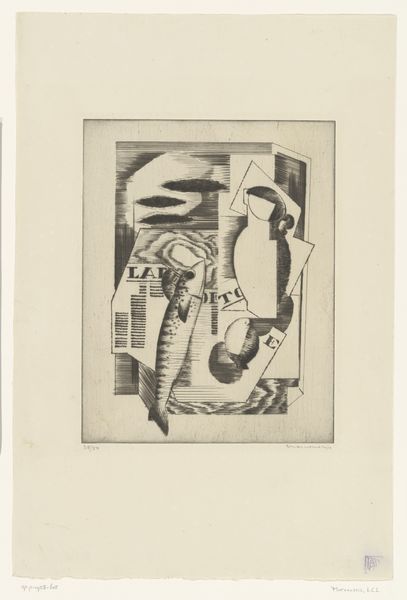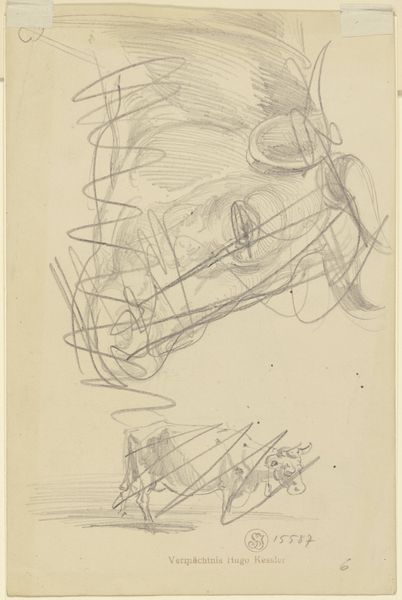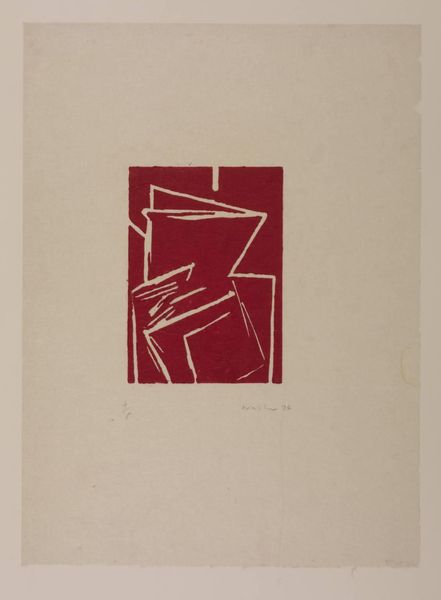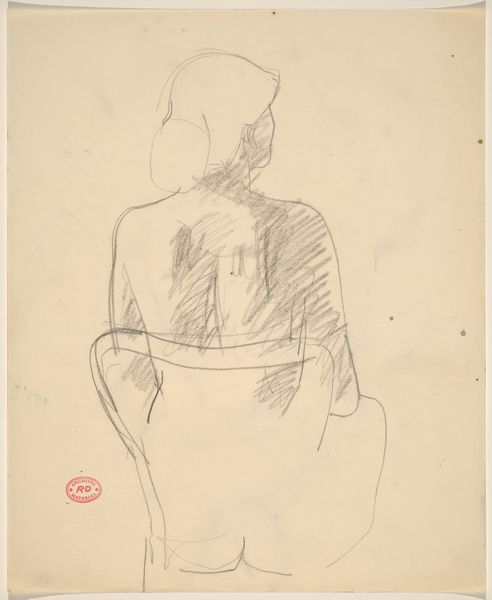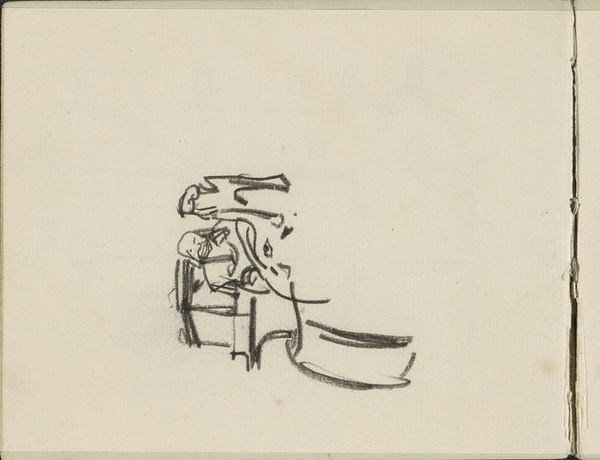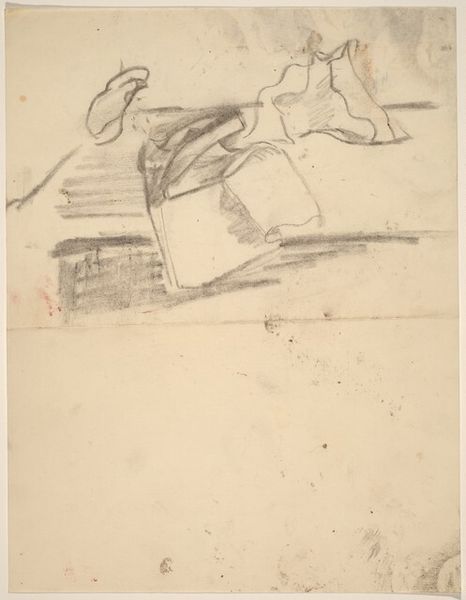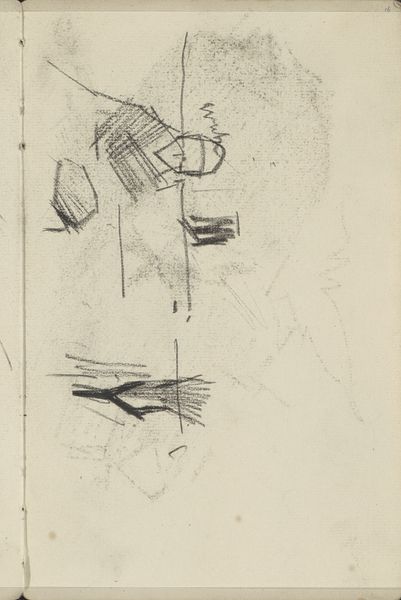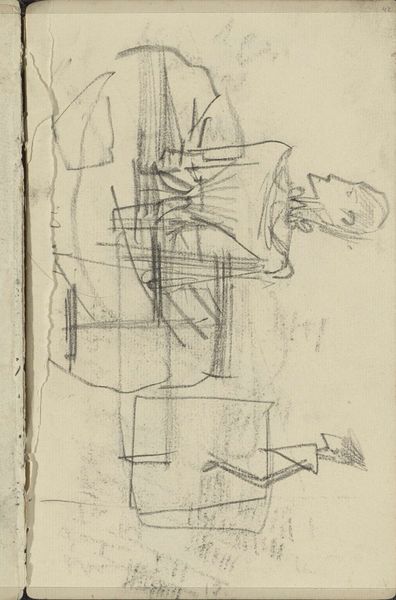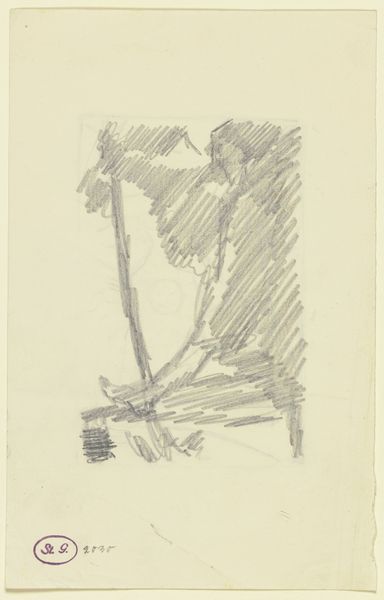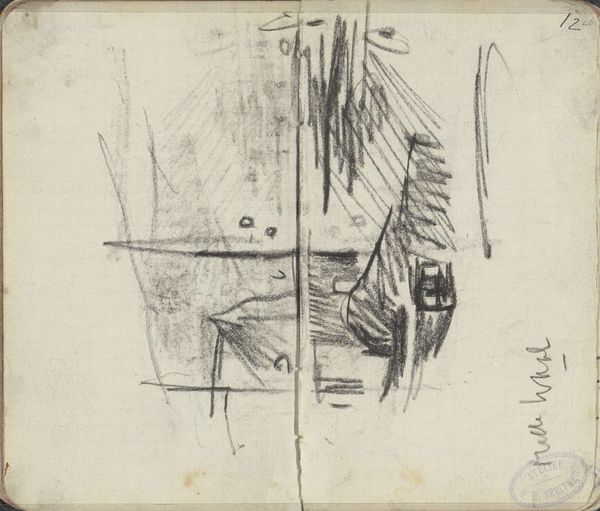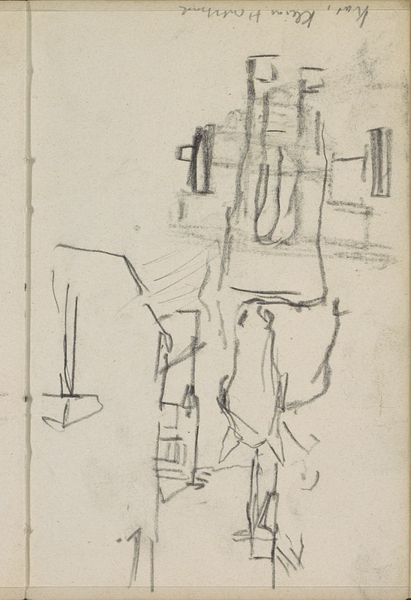![Untitled [abstract study] by Richard Diebenkorn](/_next/image?url=https%3A%2F%2Fd2w8kbdekdi1gv.cloudfront.net%2FeyJidWNrZXQiOiAiYXJ0ZXJhLWltYWdlcy1idWNrZXQiLCAia2V5IjogImFydHdvcmtzLzE4YmI5YzQ5LTkzYzEtNGJmMC1hZjZkLTFkMjMwODk0MmY5Zi8xOGJiOWM0OS05M2MxLTRiZjAtYWY2ZC0xZDIzMDg5NDJmOWZfZnVsbC5qcGciLCAiZWRpdHMiOiB7InJlc2l6ZSI6IHsid2lkdGgiOiAxOTIwLCAiaGVpZ2h0IjogMTkyMCwgImZpdCI6ICJpbnNpZGUifX19&w=3840&q=75)
drawing, ink, pen
#
drawing
#
ink drawing
#
pen sketch
#
etching
#
abstract
#
bay-area-figurative-movement
#
ink
#
pen
#
modernism
Dimensions: overall: 35 x 28 cm (13 3/4 x 11 in.)
Copyright: National Gallery of Art: CC0 1.0
Curator: This is an untitled abstract study by Richard Diebenkorn, created sometime between 1955 and 1967 using ink and pen on paper. Editor: It feels like a chaotic dreamscape—a building perhaps? Or a fractured memory sketched out with raw energy. The sharp lines give it such a frenetic, almost unsettling feeling. Curator: Notice how Diebenkorn uses intersecting lines to create depth and form. The composition relies heavily on geometric shapes and the contrast between the stark black ink and the blank page. There is a central void that grounds the entire picture plane, emphasizing an objective framework, devoid of emotional sentiment. Editor: While I acknowledge the technical aspects, I find it difficult to disassociate from what appears to be a structural skeleton—is this the remnants of a modernist housing project, post war? The severe angles evoke this strong feeling of urban alienation and failed utopias. The emptiness isn't neutral to me. Curator: The ambiguity, however, allows viewers to project their own interpretations. The abstraction pushes us toward a focus on pure form, rather than fixed representation. There is a conscious erasure that forces you to think about structure, void of political narratives, where you consider the pen strokes, the relationship between forms, and negative space above all else. Editor: Perhaps, but isn't abstraction also a product of its time? Post-war art reflects anxieties about societal collapse. An absence of representation can be as powerful of a statement as a clear depiction, especially as abstraction moved away from reflecting lived experience to creating entire new worlds. It resists direct legibility precisely when legibility fails its people. The very materials point towards such. The simple pen sketch as almost documentary artifact... Curator: Regardless, there is an intrinsic beauty in how Diebenkorn explores line and form, a language understood best by a dedicated formalism, with unique attention placed upon geometry in pictorial space. Editor: Indeed. By highlighting its fractured structures, we are invited to confront how modernity, through abstract representation, shapes our own perceptions of both hope and disillusionment.
Comments
No comments
Be the first to comment and join the conversation on the ultimate creative platform.
